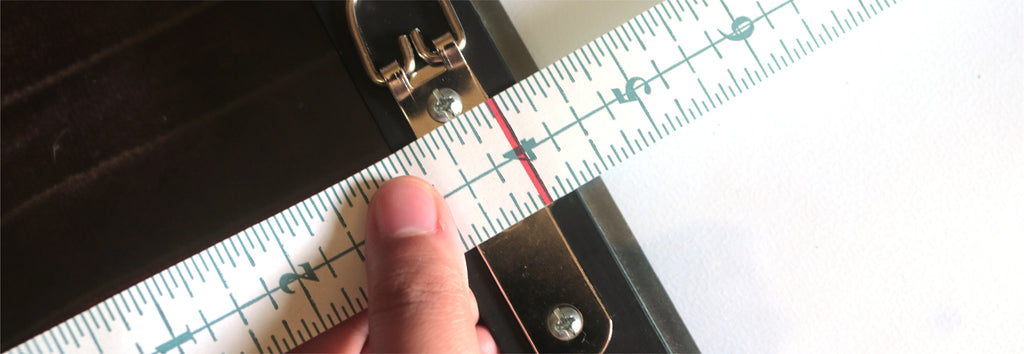It’s intimidating enough hanging a regular picture frame on the wall. Now, imagine having to hang an extremely heavy picture or mirror up and trying to ensure it doesn’t just fall off the wall.
This article will teach you which picture hangers and wall hooks you can use to hang heavy frames and how to install them. But first, let's define what we mean by "heavy frames."
Just How Heavy Are Heavy Frames?
When we say heavy frames, we’re specifically talking about pieces that measure about 40" or more and weigh approximately 75 lbs or more.
Examples of what exactly weighs this heavy are the following:
- Oil paintings
- Acrylic paintings
- Art pieces
- Picture frames
- Signage
- Mirrors
- Whiteboards
- Headboards
- Shelving
- Panels
Many large pieces can be relatively valuable so making sure they are hung properly and securely is a must so as to not break or damage them. Every art enthusiast's worst nightmare is to have their expensive art fall to the ground.
The best way to avoid this from happening is to use the correct picture hangers that will safely hold the weight of the item you are hanging. So, what hanging hardware can we use for large and heavy frames?
Here are 5 best hangers you can use:
French Cleats
French Cleats are two beveled pieces designed to interlock together to hang a frame on the wall. One cleat is installed on the wall while the other is attached to the back of the object you want to hang. Each cleat has an angle that fits perfectly, thus securely hanging frames on the wall.
There are many cleat lengths, sizes, and profiles to choose from. However, those that are 12 inches or longer are the ones that can support heavy frames that weigh 75 lbs or more.
Check out this cleat guide for heavy frames below:

At a glance, heavy duty French cleats can hold 85 lbs up to 750 lbs depending on the cleat length. The longer the cleat length, the more weight the cleats can support.
⚒️ How to Install French Cleats
Whether your frame is wood or metal will determine the proper hanging method. For metal frames, you only need to use one cleat installed on the wall, whereas with a wood frame, you would use two cleats, one for the wall and one for the frame. Metal frames rely on the frame's channel and therefore do not require a second cleat.
Our Light Cleat profiles are the only cleats that will work with metal frames, and they come in 6", 12", 18", and 30" lengths.
Light Cleat Hangers will fit on all currently manufactured metal frames generically designated as #11 Profile molding. This includes the metal molding made by Nielsen, Clark, Designer, Alumaframe, Global Art, MCS, Decor, and most OEM manufacturers. The #11 Profile category (compatible profiles) constitutes probably 95% of the current metal molding market.
Here’s how to install cleats on metal frames:
1. Attach the Light cleat to the wall using anchors and screws. Make sure to level the cleat while installing.
2. Slide the frame down to the cleat to engage.
Meanwhile, here’s how to install cleats on wood frames:
1. Center one cleat on the top rail of the wood frame with the screw holes at the top.
2. Drill pilot holes and secure the cleat with screws.
3. Hold the other cleat against the wall with the level on top.
4. Insert the screws one by one to install the wall cleat.
5. Slide the frame down to the cleat to engage both cleats.
Mega Strap Hangers
Strap hangers are bigger versions of D-rings with more screw slots to support and security for heavier objects. Medium-duty strap hangers have 2-3 screw slots, while the heavy-duty ones have 4.
Mega strap hangers can hold up to 200 lbs, ideal for heavy artwork, oversized mirrors, big picture frames, and more.

⚒️How to Install Strap Hangers
1. Put one strap hanger on opposite sides of the frame, ⅓ of the way down.
2. Insert one screw in each hole and tighten to secure.
3. Install the strap hangers upright if you’re hanging the object on wall hanging hooks.
4. Hang the frame.
📝 Note: If you’re using a picture wire, install the strap hanger at an angle so that the plane between the outer and inner wood screw holes intersects with the wire apex position.
Adjustable J-Hooks
In the Specialty & Museum Hooks section on our website, we have a unique-looking picture hanger called an Adjustable J Hook. It’s a heavy-duty two-part hook with a high-level adjustment capacity and a weight rating of 100 lbs (using 2 hooks).
What’s incredible about this hanger is that there’s approximately ¾” adjustment capacity on a J-Hook. This means installation need not be perfectly level. Another benefit of the Adjustable J Hook is that it allows adjustments without removing the frame from the wall.

The lower section of the hook moves up or down by adjusting the hex nut on the threaded bolt that connects the two parts. You can make adjustments while the hook is under load on the wall by turning the head of the connecting bolt with a screwdriver inserted through the opening on the top side of the J-hook.
Adjustable J Hooks can be used together with wired picture frames, but they are more commonly used with D-rings or strap hangers.
⚒️ How to Install Adjustable J Hooks
1. First, install the appropriate hangers in conjunction with the J hooks. We recommend using our D-rings or strap hangers.
2. While installing your chosen picture hangers, ensure they are positioned at an equal distance down the frame's top edge. Hangers should also be far enough to keep the hooks hidden when the frame is hung.
3. Measure the distance between the frame's center lines of the two hangers. Transfer this measurement to the wall.
4. The two marks should be level with each other while spaced apart at the same distance as the distance between the hangers on the frame.
5. Fasten the hooks to the wall using the nails provided. Insert the pins in the pre-drilled holes and gently hammer them into the wall to secure the hook. You can use anchors and screws in wall studs rather than the nails to add additional strength to the installation.
6. Adjust as needed by turning the head of the J hook connecting bolt using a Phillips screwdriver.
For more extensive adjustments, remove the frame from the wall and move the hex nut on either hook’s connecting bolts up or down.
Drywall Hooks
Brass, Tremor, and Nickel hooks are traditional wall hanging hooks for hanging pictures, frames, and other objects. Tremor hooks can hold up to 75 lbs, while brass and nickel hooks can support up to 100 lbs.

These three kinds of drywall hooks are similar, but tremor hooks have a locking mechanism under the nails to secure frames. If tremors are felt along the walls due to high-traffic movement or earthquakes, wires or hangers will not slip off when using tremor hooks.
One thing about these hooks is that they are compatible with drywall and plaster walls only. The needlepoint size nails that come with them leave just pin-sized holes that are barely noticeable and easy to fix.
⚒️ How to Install Drywall Hooks
1. Hold the hook against the wall.
2. Insert a nail into each of the nail sockets and hammer gently.
Installing drywall hooks is pretty straightforward, but here are a few reminders that you should remember:
- Consider using two hooks spaced apart evenly. Frames will stay level, and more secure while hung on the wall.
- Double-check behind wired frames and ensure the hook is caught on the hook, not snagged on top of it.
- Nail guide sockets are at a 45-degree angle to ensure proper installation.
- Be careful not to over-hammer the hook as this can compromise its holding power and damage your wall.
- Remove hooks by pulling the nails back at the same angle, with a slight twisting motion. Use fingers or soft-faced pliers.
- Avoid prying hooks away from the wall with a screwdriver as this can damage the wall surface.
Final Thoughts
Hopefully you’re feeling more confident with hanging heavy items by now. The trick is to find a hanger that can hold the weight capacity of the item you are trying to hang as well as install them properly and you’ll be on your way to getting those large pieces hung once and for all.
If you still have questions, feel free to contact us at support@picturehangsolutions.com and our team will be happy to help.






Leave a comment (all fields required)